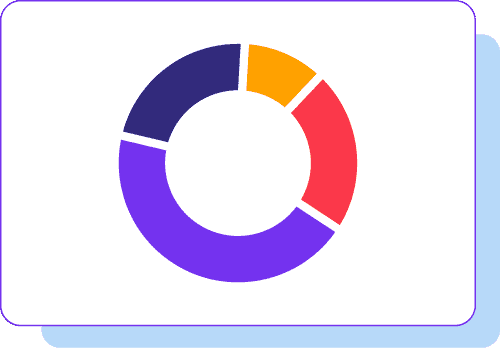The banking sector is undergoing a profound transformation driven by digital technologies, necessitating the adoption of robust digital marketing strategies to remain competitive and relevant. Recent research findings shed light on the pivotal role of digital marketing in reshaping the banking landscape, driving innovation, and enhancing customer experiences (Banerjee et al., 2022).
Table 1: Digital Marketing Trends in the Banking Sector
| Trends | Description |
|---|---|
| Omni-channel Marketing | Banks are adopting omni-channel strategies to provide a seamless experience across multiple channels. |
| Personalised Marketing | Utilizing customer data to deliver personalized marketing messages and offers. |
| AI and Chatbots | Implementing AI-driven chatbots to enhance customer service and engagement. |
| Mobile Banking | Offering feature-rich mobile banking apps to cater to the increasing demand for digital banking. |
Enhancing Customer Engagement and Market Reach
Traditional banks are increasingly embracing digital transformation to bolster their digital presence and expand market reach (Banerjee et al., 2022). This shift towards digital strategies enables banks to connect with previously untapped customer segments and enhance audience engagement (Amelda et al., 2021). By leveraging digital marketing capabilities, banks can effectively target and engage with customers across various online channels, driving brand awareness and customer loyalty.
Table 2: Strategies for Enhancing Customer Engagement
| Strategies | Description |
|---|---|
| Segmentation and Personalisation | Utilize customer data to segment the audience and deliver personalized marketing messages. |
| Omni-channel Marketing | Implement an integrated marketing approach across multiple channels for a seamless customer experience. |
| Content Marketing | Create valuable and informative content to educate and engage customers, positioning the bank as a trusted advisor. |
| Social Media Engagement | Establish a strong presence on social media platforms to interact with customers and build brand awareness. |
| Email Marketing Campaigns | Develop targeted email campaigns to nurture customer relationships and drive conversions. |
Actionable Steps
- Omni-channel Marketing: Develop an omni-channel marketing strategy that seamlessly integrates digital channels such as social media, search engines, email, and mobile apps. Create cohesive messaging across channels to provide a consistent brand experience and reinforce key marketing messages.
- Targeted Advertising: Leverage data analytics and customer insights to create targeted advertising campaigns that resonate with specific audience segments. Use demographic, behavioural, and contextual targeting to deliver personalized messages and offers that are relevant to each customer’s needs and preferences.
- Content Marketing: Invest in content marketing initiatives to position your bank as a thought leader and trusted advisor in the financial industry. Create informative and engaging content such as blog posts, articles, infographics, and videos that educate and empower customers to make informed financial decisions.
- Social Media Engagement: Engage with customers on social media platforms to foster meaningful connections and build brand loyalty. Share valuable content, respond to customer inquiries promptly, and actively participate in conversations to humanize your brand and cultivate a sense of community.
- Email Marketing: Develop targeted email marketing campaigns to nurture leads, promote products and services, and drive conversions. Segment your email list based on customer preferences and behaviour to deliver personalized content that resonates with each recipient.
- Search Engine Optimization (SEO): Optimize your website and digital content for search engines to improve visibility and drive organic traffic. Conduct keyword research, optimize meta tags and descriptions, and regularly publish high-quality content to enhance your search engine rankings and attract qualified leads.
- Performance Tracking and Analytics: Monitor the performance of your digital marketing campaigns using key performance indicators (KPIs) such as conversion rates, click-through rates, and return on investment (ROI). Use advanced analytics tools to gain insights into customer behaviour and campaign effectiveness, and make data-driven decisions to optimize your marketing efforts.
Elevating Customer Satisfaction and Trust
Digital marketing plays a crucial role in elevating customer satisfaction within the banking industry by enhancing the overall customer experience (Sofiati et al., 2023). By leveraging digital channels, banks can provide seamless and convenient banking services, leading to increased customer satisfaction and loyalty (Pristiyono et al., 2022). Implementing robust digital transformation strategies can also improve customer trust and confidence in the bank’s ability to meet their financial needs.
Table 3: Strategies for Elevating Customer Satisfaction
| Strategies | Description |
|---|---|
| Streamlined Online Banking | Improve the user experience of online banking platforms with features like mobile banking and digital payments. |
| 24/7 Customer Support | Offer round-the-clock customer support through chatbots, email, and social media to address customer queries promptly. |
| Financial Education Resources | Provide educational resources and tools to help customers make informed financial decisions. |
| Transparency and Security | Maintain transparency in banking operations and implement robust security measures to protect customer data. |
| Feedback Mechanisms | Encourage customer feedback to identify areas for improvement and tailor services to meet customer needs. |
Actionable Steps
- Streamlined Online Banking Services: Continuously improve the user experience of your online banking platform, ensuring it is intuitive, secure, and user-friendly. Enable features such as mobile banking, online account management, and digital payments to enhance convenience for customers.
- 24/7 Customer Support: Offer round-the-clock customer support through digital channels such as chatbots, email, and social media. Ensure prompt responses to customer queries and issues to demonstrate commitment to customer satisfaction.
- Financial Education Resources: Provide educational resources and tools to help customers make informed financial decisions. Offer online tutorials, budgeting calculators, and financial planning guides to empower customers to manage their finances effectively.
- Digital Security Measures: Invest in robust cybersecurity measures to protect customer data and transactions. Implement multi-factor authentication, encryption protocols, and regular security audits to safeguard against cyber threats and fraud.
- Transparency and Accountability: Maintain transparency in your communication with customers regarding fees, policies, and terms of service. Build trust by being upfront about your offerings and delivering on promises consistently.
Driving Innovation Through Digital Transformation
Robust digital marketing strategies enable banks to drive innovation and adapt to the evolving needs of customers (Li, 2022). By leveraging fintech applications and emerging technologies, banks can enhance service delivery, streamline processes, and create differentiated offerings (Li, 2022). The integration of digital banking within the marketing mix facilitates innovative approaches to product development, distribution, and customer engagement (Коваленко et al., 2021).
Table 4: Strategies for Driving Innovation
| Strategies | Description |
|---|---|
| Fintech Partnerships | Collaborate with fintech startups and technology providers to leverage innovative solutions. |
| Digital Product Development | Invest in the development of digital banking products and services that cater to changing customer needs. |
| Agile Development Processes | Adopt agile methodologies to drive innovation and accelerate time-to-market for new products. |
| Customer-Centric Design | Prioritize customer needs in the design and development of digital banking solutions. |
| Continuous Improvement | Monitor market trends and customer feedback to identify opportunities for innovation and improvement. |
Actionable Steps
- Fintech Partnerships: Collaborate with fintech startups and technology providers to leverage innovative solutions for banking services. Explore partnerships in areas such as digital payments, robo-advisory, and blockchain technology to enhance your product offerings.
- Digital Product Development: Invest in the development of digital banking products and services that cater to changing customer preferences and behaviours. Launch innovative solutions such as digital wallets, peer-to-peer lending platforms, and AI-powered financial planning tools.
- Agile Development Processes: Adopt agile development methodologies to drive innovation and accelerate time-to-market for new products and features. Foster a culture of experimentation and iteration to continuously improve and refine digital offerings.
- Customer-Centric Design: Prioritize customer needs and preferences in the design and development of digital banking solutions. Conduct user research, usability testing, and feedback sessions to ensure that products meet customer expectations and deliver value.
- Continuous Improvement: Monitor market trends, competitor activities, and customer feedback to identify opportunities for innovation and improvement. Regularly evaluate and refine digital strategies and offerings to stay ahead of the curve and maintain relevance in the market.
Adapting to Digital Disruption and Market Dynamics
The banking industry is experiencing rapid digital disruption, driven by changing consumer preferences, regulatory changes, and technological advancements (Omarini, 2017). To thrive in this dynamic landscape, banks must embrace digital transformation and adapt their marketing strategies to meet evolving customer needs (Pristiyono et al., 2022). By leveraging digital channels and innovative technologies, banks can stay ahead of the curve and position themselves for long-term success.
Actionable Steps
- Market Research and Analysis: Conduct comprehensive market research to understand emerging trends, consumer behaviours, and competitive dynamics. Use data-driven insights to inform strategic decision-making and identify new opportunities for growth.
- Agility and Flexibility: Build agile and flexible marketing strategies that can quickly adapt to changing market conditions and customer preferences. Experiment with new digital channels, messaging tactics, and campaign approaches to stay relevant and effective.
- Regulatory Compliance: Stay abreast of regulatory changes and compliance requirements governing digital marketing and financial services. Ensure that marketing efforts adhere to industry regulations and ethical standards to maintain trust and credibility.
- Cybersecurity Measures: Invest in robust cybersecurity measures to protect customer data and safeguard against cyber threats and attacks. Implement encryption, multi-factor authentication, and intrusion detection systems to enhance security and privacy.
- Partnerships and Alliances: Forge strategic partnerships and alliances with fintech firms, technology vendors, and industry stakeholders to leverage complementary strengths and capabilities. Collaborate on joint initiatives, co-marketing campaigns, and innovation projects to drive mutual value and competitive advantage.
References
Amelda, B., Alamsjah, F., & Elidjen, E. (2021). Does the digital marketing capability of Indonesian banks align with digital leadership and technology capabilities on company performance?. Commit (Communication and Information Technology) Journal, 15(1), 9-17. https://doi.org/10.21512/commit.v15i1.6663
Banerjee, R., Majumdar, S., & Albastaki, M. (2022). Ideal self-congruence: neobanking by traditional banks and the impact on market share – a case of UAE banks. International Journal of Professional Business Review, 7(4), e0779. https://doi.org/10.26668/businessreview/2022.v7i4.e779
Коваленко, В., Diatlova, Y., Diatlova, V., Derkach, J., Goncharenko, A., & Zos-Kior, M. (2021). Digital banking in the marketing mix and human resource management: improving the approach to the assessment as an innovative component. Laplage Em Revista, 7(3A), 111-119. https://doi.org/10.24115/s2446-6220202173a1386p.111-119
Li, P. (2022). Fintech application and bank risk-taking: evidence from Chinese city commercial banks., 850-859. https://doi.org/10.2991/978-94-6463-052-7_97
Omarini, A. (2017). The digital transformation in banking and the role of fintechs in the new financial intermediation scenario. International Journal of Finance Economics and Trade, 1-6. https://doi.org/10.19070/2643-038x-170001
Sofiati, N., Sudaryo, Y., Natigor, D., & Jaya, R. (2023). Increased customer satisfaction using digital marketing implementation in the banking industry image. Sosiohumaniora, 25(1), 80. https://doi.org/10.24198/sosiohumaniora.v25i1.45604
Pristiyono, P., Juliana, J., & Prayoga, Y. (2022). Measuring customer trust through digital transformation of banking as a competitive advantage. Jurnal Ekonomi Bisnis Dan Kewirausahaan, 11(2), 214. https://doi.org/10.26418/jebik.v11i2.51986















